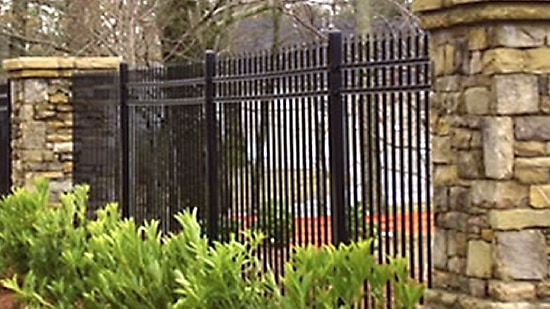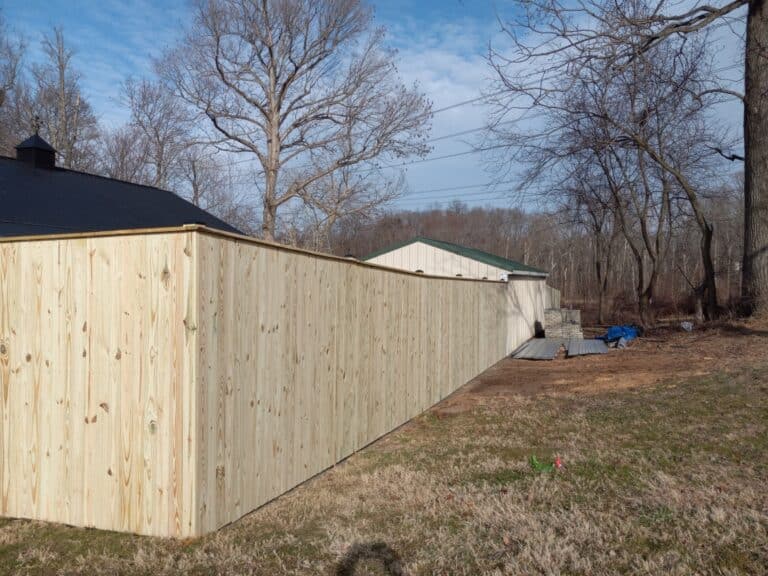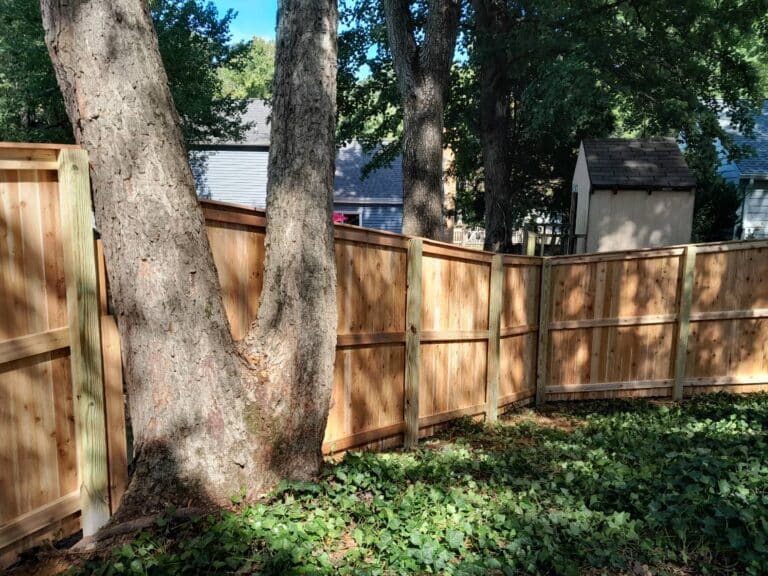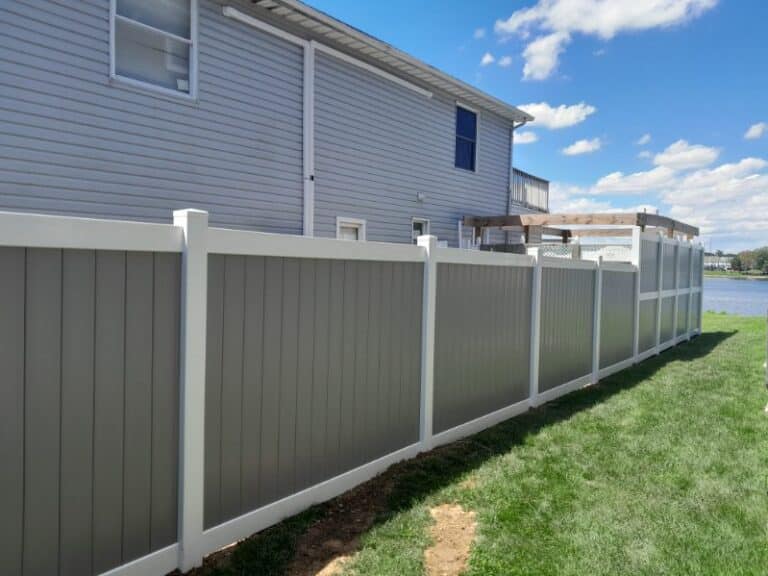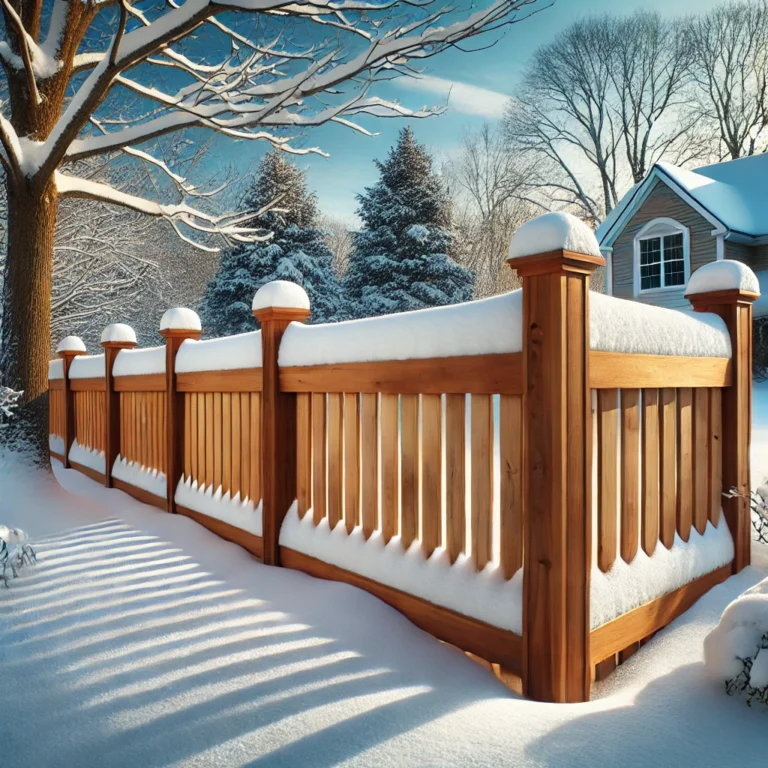One of the biggest fencing trends in 2019 isn’t strictly about fencing – it’s all about the plants! Integrating green plants or gorgeous florals right into your fencing combines an organic, natural feel with a fresh, modern look. But making the most of this trend requires a little care. Here are three considerations to plan through that will help you integrate florals and fencing in a way that will show both to the best advantage.
1. Your Commitment Level
When you decide to integrate plants and fencing, you can go about it with several levels of commitment.
Framing
On the highest level of commitment, you can choose the shape of your fence to frame the plants that you want to grow along with it. This could include cutouts, built in frames, or changing the height of your fence. This level of integration allows for a seamless, organic relationship between the plants and fencing. It does, however, lock you into the plants as well as the fencing. If you decide later that you want a different size or shape of plants, they might not fit into your fencing shape as well.
Lattice
Latticing or trellises built into a fence for climbing plants offer another closely integrated combination. While this is also a high commitment option, since you would need to rip out the existing plant to change things up, it does offer a little more flexibility than planning plants into the shape of the fence. There are a wide variety of climbing plants that you could choose to plant along your fence, and you could change the look of your fence by changing the plants.
Built-in shelving
The lowest commitment way of integrating plants and fencing is to plan built-in spaces for planters and potted plants. Built-in planters let you change up the plants by the year, while shelves for potted plants are even more flexible. You can change up the plants by the year, just like with planters, but you can also change the style of your pots. You can even freshen up the look of your fence every season by using the shelving for other decorative elements.
2. The best fencing material
There are always pros and cons to wood, vinyl, and metal fencing, but integrating greenery and florals adds some extra considerations. The extra moisture introduced by plants could negatively affect the integrity of wood and some metal fences. On the other hand, the less natural look of vinyl might be even more stark in close company with the organic look of greenery.
The material of the fence also impacts the aesthetic of your final design. Climbing roses growing on cast iron fencing can have a striking, dramatic impact, whereas the same plant growing on a wooden lattice can create a dreamy, romantic feel. Colored vinyl fencing can allow you to create a sleek, modern color block look that is difficult to achieve with other materials. Whatever your desired aesthetic, it can be helpful to talk to fencing professionals who can help you choose the best material for your needs.
3. How to make it happen
Will you DIY, or make this a professional job? With the extra considerations and design work of integrating plants, it’s important to make sure that this is a job done right. Talk to the professionals at All Around Fence, LLC to find out how we can help you create the integrated fence of your dreams. Our extensive experience designing and installing residential and commercial fencing lets us help you bring this 2019 trend to life in a pleasing, timeless manner.

